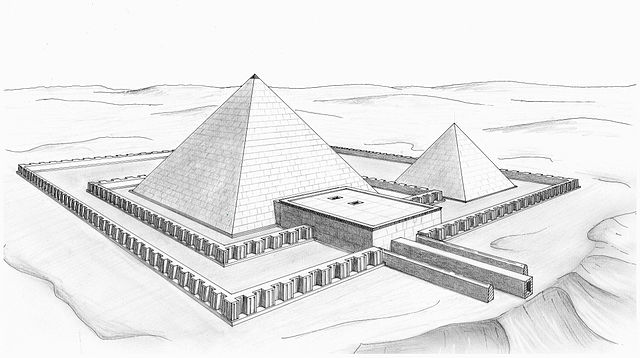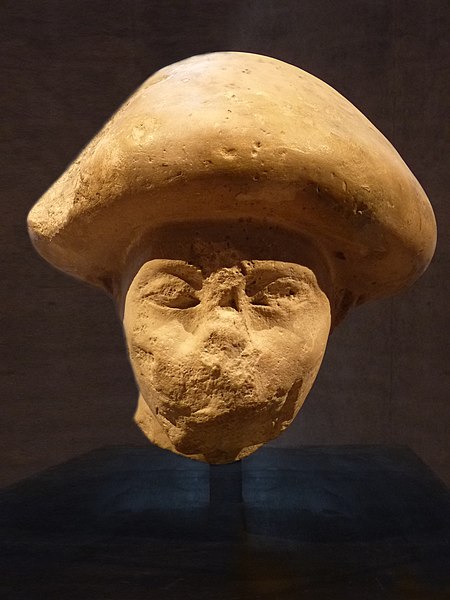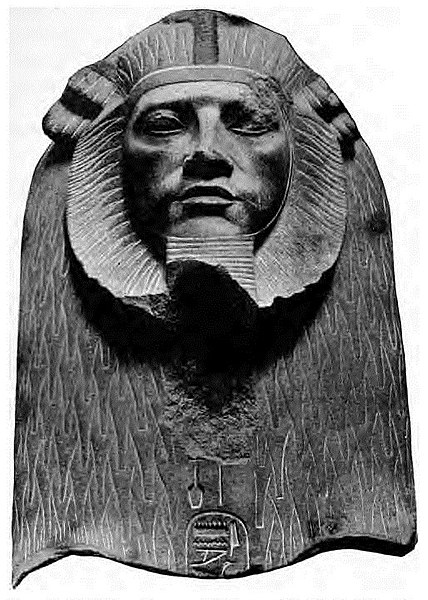Second Intermediate Period of Egypt
The Second Intermediate Period dates from 1700 to 1550 BC. It marks a period when ancient Egypt was divided into smaller dynasties for a second time, between the end of the Middle Kingdom and the start of the New Kingdom. The concept of a Second Intermediate Period generally includes the 13th through to the 17th dynasties, however there is no universal agreement in Egyptology about how to define the period.
The pyramid of Khendjer is the only pyramid known to have been completed during the 13th Dynasty
Upper part of a statue of pharaoh Khendjer from his pyramid complex
Depiction of an Asiatic (Hyksos) official, with the distinctive "mushroom headed" hairstyle
Front view of one of the "Hyksos sphinxes" of Amenemhat III, usurped by Hyksos king Apepi
The history of ancient Egypt spans the period from the early prehistoric settlements of the northern Nile valley to the Roman conquest of Egypt in 30 BC. The pharaonic period, the period in which Egypt was ruled by a pharaoh, is dated from the 32nd century BC, when Upper and Lower Egypt were unified, until the country fell under Macedonian rule in 332 BC.
A Gerzeh culture vase decorated with gazelles, on display at the Louvre.
Mesopotamian king as Master of Animals on the Gebel el-Arak Knife, dated to the Naqada II period circa 3300-3200 BC, Abydos, Egypt. Louvre Museum, reference E 11517. This work of art both shows the influence of Mesopotamia on Egypt at an early date, and the state of Mesopotamian royal iconography during the Uruk period.
An Osiris statue of Mentuhotep II, the founder of the Middle Kingdom
A guardian statue which reflects the facial features of the reigning king, probably Amenemhat II or Senwosret II, and which functioned as a divine guardian for the imiut. Made of cedar wood and plaster c. 1919–1885 BC








